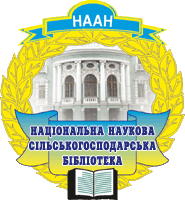| All numbers / 2017 No.2 / Article No.5 |
| |
| 5 |
Symbolics of hetman regalia: historical retrospective
|
full article |
|
https://doi.org/
Kuybida V., Shapoval L.
|
Pages: |
76-96 |
 |
 |
| Summary |
|
The paper brings into focus the symbolic of kleynods: pectoral, bell-tree, tug, korohva, military flag, chevrons of the volunteer battalions of Antiterrorist operation, which is its main goal. The priority task of the work is considered to be an optimization of methodological and contextual approach to the study of the weapons and the vector correction towards bias educational emphasis from traditional functions –destruction and defense to its symbolic content. For this article we used a complex of methods, including search and bibliographic, synthesis, systematization and classification, retrospective method, problematic and chronological, comparative historical and others. As a result of the study of this topic we got the conclusions. Kleynods, kleynots are symbols of state power, military troops; a gesture of putting a kleynod on the hat which is lying on the ground is a symbol of rejection the authority, and picking up if from the ground meant regaining the authority. The hetman regalia of an Old Age were represented in symbols of the Black Sea Scythia. Symbols of different levels of power were special hats, pectorals, hryvnas, precious axes, clubs and flanged maces.
|
| Keywords |
|
kleynods symbolics, kleynods of the Old Age and the Cossack State, pectoral, bell-tree, tug, gonfalov, military flag, chevrons of the volunteer battalions
|
| References |
|
- Bibliia (1992). [The Bible]. Kiev : 1253. [in Ukrainian].
- Hutsul, V. M. (2008). Boiovi mechi z muzeinoi kolektsii Uzhhorodskoho zamku [Swords from the museum's collection Uzhhorod Castle]. Lviv: Vydavnycha spilka Prosvita, 74. [in Ukrainian].
- Dal, V. (1956). Tolkovыi slovar zhyvoho velykorusskoho yazыka [Explanatory dictionary of the living Great Russian language A-Z]. Moskov : Hos. yzd. ynostr. y nats. slovarei, 699. [in Russian].
- Dal, V. (1956). Tolkovыi slovar zhyvoho velykorusskoho yazыka [Explanatory dictionary of the living Great Russian language Y-O]. Moskov : Hos. yzd. ynostr. y nats. slovarei, 779. [in Russian].
- Dal, V. (1956). Tolkovыi slovar zhyvoho velykorusskoho yazыka [Explanatory dictionary of the living Great Russian language P]. Moskov : Hos. yzd. ynostr. y nats. slovarei, 555. [in Russian].
- Potapenko, O.I., Kotsur, V.P. and Kuibida, V.V. (2015). Entsyklopedychnyi slovnyk symvoliv kultury Ukrainy [Collegiate Dictionary culture symbols Ukraine]. Korsun-Shevchenkivskyi: Korsunskyi vydavnychyi dim Vsesvit, 912. [in Ukrainian].
- Karpov, V. (2007). Viiskovi prapory Ukrainy [Military flags of Ukraine]. Kiev, 5 – 6. [in Ukrainian].
- Karpov, V. (2014). Stanovlennia ta rozvytok viiskovoi symvoliky Ukrainy. 1991 – 2012 rr.[Formation and development of military symbols of Ukraine. 1991 - 2012 rr.]. Kiev : NAKKKiM, 29 – 30. [in Ukrainian].
- Mamchak, M. (2009). Viiskovo-morska symvolika Ukrainy [Naval symbols Ukraine]. Sniatyn: Pru Prynt, 24. [in Ukrainian].
- Mytropolyt Ilarion. (1982). Etymolohichno-semantychnyi slovnyk ukrainskoi movy T. 2 [Etymologically, semantic dictionary of the Ukrainian language]. Vinnipeg : Volyn, 397. [in Ukrainian].
- Mytropolyt Ilarion. (1994). Etymolohichno-semantychnyi slovnyk ukrainskoi movy T. 4 [Etymologically, semantic dictionary of the Ukrainian language]. Vinnipeg : Volyn, 557. [in Ukrainian].
- Mozolevskyi, B. (2005). Skifskyi step [Scythian steppe]. Kiev : Tempora, 192. [in Ukrainian].
- Netudykhatkin, I. (2010). Doslidzhennia portreta Vasylia Dunina-Borkovskoho v blyzhnikh infrachervonykh ta u vidbytykh ultrafioletovykh promeniakh: istorychna interpretatsiia [Research portrait Dunin-Borkowski Basil in the near infrared and ultraviolet light reflected in: the historical interpretation] Siverianskyi litopys [Siversky chronicle]. Chernihiv. 1.116 – 123. [in Ukrainian].
- Yaremenko, V. and Slipushko, O. (2001). Novyi tlumachnyi slovnyk ukrainskoi movy T. 3. [New Dictionary of Ukrainian language]. Kiev : Akonit, 862. [in Ukrainian].
- Hrinchenko, B. (1908). Slovarъ ukrainskoi movy T. 2 [Ukrainian Language Dictionary]. Kiev. 573. [in Ukrainian].
- Hrinchenko, B. (1909). Slovarъ ukrainskoi movy T. 3 [Ukrainian Language Dictionary]. Kiev. 506. [in Ukrainian].
- 17.Fasmer, M. (1986). Эtymolohycheskyi slovar russkoho yazыka : v 4 t. T. 1: (A-D). [Etymological dictionary of Russian language]. Moskov : Prohress, 242. [in Russian].
- Kholymonenko, H. (2010). Pokhodzhennia termina bunchuk [The origin of the term horse-tail]. Visnyk Kyivskoho natsionalnoho universytetu im. T. Shevchenka [Bulletin of the Kiev National University. Shevchenko]. Kiev. 16, 30 – 31. [in Ukrainian].
- Iavornytskyi, D. (1990). Istoriia zaporizkykh kozakiv T. 1. [History of Zaporizhzhya Cossacks]. Kiev. 169 – 170. [in Ukrainian].
|


